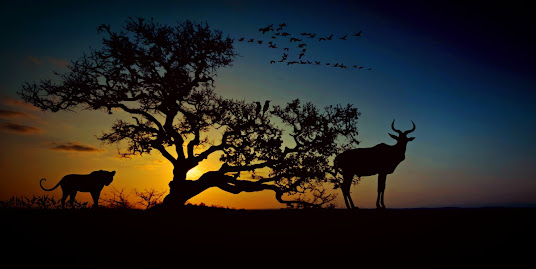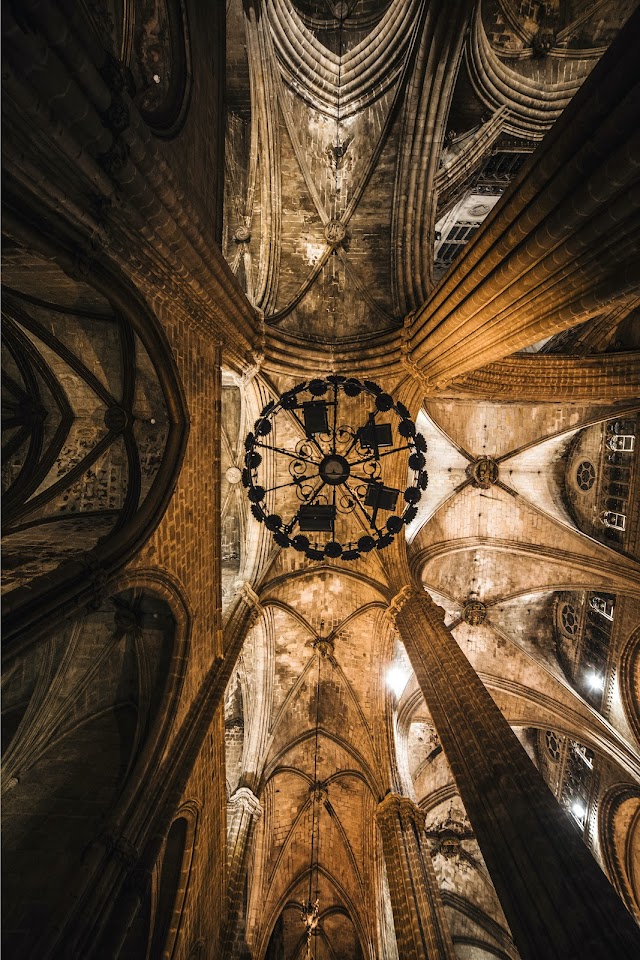THE EIGHTEENTH-CENTURY
Another period in the history of English Literature in the Eighteenth Century (1700-1784) which is consisted of two sub-periods;
- The Age of Pope (1700-1744)
- The Age of Johnson (1744-1784)
It is also called the Augustan Age or Classical Age in history due to so many literary creations and opposite to the previous styles such as the exaggerated and whimsical style of the Elizabethan and Puritan ages. This era consist of a group of writers who adopted the style of ancient classical writers. This was the age of reason which reflects the independence of the present-day writers having a good sense of literature. Queen Anne ascended to the throne in 1702 and later on George-I, George-II and George-III ruled over the England whole century. In this era the first daily newspaper was started, the Cabinet government was established and the war with France happened in 1756 was a major political aspect.
Genres of the Eighteenth Century; (Age of Pope)
As far as the genre of the Age of Pope (1700-1744) is concerned there was poetry, drama, and prose in which the eminent genre of the phase was prose.
Poetry Age of Pope:
It was the classical poetry time when the period was dominated by the Age of the Pope till 1744 when a main matter of discussion was the life of society and cultural aspects. The most prominent name in the age was Alexander Pope (1688-1744) who was a Catholic by religious aspects. He wrote his masterpiece ‘The Rape of the Lock’ in 1712 a poem that is considered to be one of the great works in the History of English Literature. It was a mock-heroic all-about story of the stealth of Lock of Miss Arabella by Lord Peter. Another prominent work was ‘Essay on Criticism’ in 1711 description of the Ancients and their relation with nature. He also wrote a satire ‘The Dunciad’, in which he criticized literary incompetence. Pope also wrote another great poem ‘The Essay on Man’ in 1732 in a beautiful style. In the last, he wrote against his enemies in ‘Imitations of Horace and Epistle’. He wrote in an epigrammatic style which has been appreciated in the 20th century.
Mathew Prior (1664-1721) was another poet of the age he was a politician. He wrote long poems such as, ‘Solomon on the Vanity of the World’ and ‘Alma or the Progress of the Mind’ a thoughtful kind of poem.
Lady Win Chelsea (1660-1725) was a follower of the Pope. Her ‘Nocturnal Reverie’ was a prominent work at that age.
James Thomas (16?-17?) was another poet of the age who wrote ‘The Seasons’ in 1726 a nature poem written in blank verse.
John Gay (1685-1732) was also a poet of this age a writer of lyrics and couplets. His well-known work was ‘Rural Sports’, ‘Black Eyed Susan’ and ‘Fables’.
Edward Young (1683-1785) was a satirist who wrote ‘Universal Passions’ and ‘The Night Thoughts’ written in Blank Verse.
Thomas Parnell (1679-1718) was another poet of the age who wrote ‘The Night-Piece on Death’ and ‘Hymn to Contentment.
Prose and Novel in the Age of Pope:
The most famous genre of the first half of the 18th century was prose writing, and the prominent figure was Daniel Defoe (1661-1731) wrote his well-known prose writing such as, ‘Robinson Crusoe’. After that, he wrote some fictional works such as ‘The Memories of a Cavalier’, ‘Captain Singleton’, ‘Moll Flanders’, ‘Colonel Jack’, ‘Roxana’ and Journal of the Plague Year’. These were the work of reality told to the readers.
Jonathan Swift (1667-1745) wrote satirical writings such as ‘Tale of a Tub’ and ‘Gulliver’s Travels’ which was one of the great proses in the history of English Literature. His work was written in the allegorical style and all about the satirical criticism of the social and political system. Another prominent work was ‘Journal to Stella’ written for the beloved Esther Johnson.
Joseph Addison (1672-1719) wrote his famous prose work ‘The Campaign’, ‘The Tatler’ and ‘The Spectator’.
Sir Richard Stele (1672-1729) worked in collaboration with Addison ‘The Periodical Essays’.
Another famous genre of the first half of the 18th century was the novel whose prominent figure was Richardson (1689-1761) wrote his famous novel ‘Pamela’ in 1740.
Henry Fielding (1707-1754) worked in both ages i.e. Age of Pope and Age of Johnson. He wrote his famous novel ‘Joseph Andrews’ in 1742 and ‘Tom Jones’ in 1749.
Genres of the Eighteenth Century; (Age of Johnson)This was the age which is dominated by Dr. Samuel Johnson which was continued till the death of Johnson in 1784. It was also considered to be the Age of Transition due to its classical spins on romantic spirit.
Poetry in the Age of Johnson:
Poetry in the second half of the 18th century was started by the name of Dr. Samuel Johnson (1709-1784). He started writing poetry in his childhood and the spirit of the classics as part of his poetical work. He wrote one of his best poems, ‘London’ and ‘The Vanity of the Human Wishes’ were his chief poems with the rhetorical and formal elegance in the classical manners.
Oliver Goldsmith (1728-1774) was also part of a poetical group of the age and wrote poetry on classical manners like Johnson. He wrote his important poems ‘The Traveller’ and ‘The Deserted Village’ which were classical standard poems that touches Romanticism. As basically it was the time when getting changeover from Classical to Romanticism.
These were the poets of classics who wrote poems on the standards of classicism later on there was a group of poets who wrote romanticism kind of poetry. James Thomson (1700-1748) was one of them who wrote poems in natural settings such as, ‘The Seasons’ which was all about the scenery of natural and rural kinds of things like woods, fields, and also wild creatures. Another poem was ‘The Castle of Indolence’ which was an allegorical poem in the form of the Spenserian stanza.
Another poetical figure of the Age of Johnson was Thomas Gray (1716-1771). He was famous for the ‘Elegy Written in Country Churchyard’. This was the expressing poem of personal feelings and a melancholy theme. Moreover, he wrote ‘The Progress of The Poesy’ which is a poem of romantic standard, and ‘The Bard’ which was more romantic than the last one.
Similarly, William Collins (1721-1759) was also the poet of Johnson’s era. He wrote melancholic and romantic poems such as, ‘Oriental Eclogues’ a romantic poem. Moreover, he wrote his best poems, ‘To Simplicity’, ‘To the Passions’, ‘To Fear’, ‘How to Sleep the Brave’, and ‘Ode to Evening’ was all the poems of solitude and calmed poems.
James Macpherson (1736-1796) was famous for his publication of Ossianic poems which is called ‘Work of Ossian’ was a romantic work.
The poetry of William Blake (1787-1787) was not a classical kind of poetry but lyrical work. His famous poems were ‘Little Lamb who made Thee’, ‘Tiger’, ‘Tiger Burning Bright’, ‘The Marriage of Heaven and Hell’ and these were the part of his work “The Song of Experience” and “The Song of Innocence” in the history of English Literature.
William Cowper (1731-1800) wrote autobiographical poetry written in blank verses. Poem ‘The Task’ was his famous poem about the scenario of homely description. Moreover, he also wrote ‘On the Receipt of My Mother’s Picture’ and ‘Alexander Selkirk’
Similarly, Robert Burns (1789-1796) was a songwriter. His famous poems were ‘The Cotter’s Saturday’, ‘To a Mouse’, ‘To a Mountain Daisy’, ‘Man was made to Mourne’ was a beautiful and emotional kinds of poetry.
George Crabbe (1754-1832) was also partly a romantic poet of the age. His poem ‘The Village’, ‘The Perish Register’, The Borough’, ‘Tales in Verse’, ‘Tales of the Hall’.
Prose and Drama in the Age of Johnson:
The prose of the second half of the 18th century was followed by the writings of Addison, Steele, and Swift. In this way first of all Dr. Samuel Johnson (1709-1784) again wrote in this genre as well. His best prose was ‘Dictionary’ and ‘Lives of Poets’. Furthermore, he wrote articles such as ‘The Rambler’, ‘The Idler’, and ‘Rasselas’.
Edmund Burke (1729-1787) was another prominent figure of this age. He wrote speeches and writings such as ‘Thoughts on the Present Discontent’ in 1770, ‘On American Taxation’ in 1774, ‘On Conciliation with America’ and ‘The Reflection on the French Revolution’ in 1790 were all about revolution aspects.
Similarly, Edward Gibbon (1797-1794) wrote his famous prose writing such as, ‘The Decline and Fall of Roman Empire’ which was a historical work.
The drama of the second half of 18th century was not of a high standard which is why most dramatists turned to novels due to limitations in the field of drama.
Thomas Otway (1652-1685) was the drama writer of the age who wrote traditional English dramas like, ‘Venice Preserved’.
Joseph Addison (1672-1719) also wrote classical traditions in his drama ‘Cato’ which is written in 1713.
Dr. Samuel Johnson (1709-1784) alongside poetry and prose writing also wrote drama like ‘Irene’ in 1749.
Sir Richard Steele (1672-1719) wrote sentimental comedies ‘The Funeral’, ‘The Laying Lover’, ‘The Tender Husband’ and ‘The Conscious Lovers’
James Thomson (1700-1748) wrote his famous drama ‘Sophonisba’.
Oliver Goldsmith (1728-1774) also wrote dramas such as ‘Good Natured Man’ and ‘She Stoops to Conquer’ in 1773, the second one is a masterpiece by Goldsmith.
Richard Brinsley Sheridan (1751-1861) wrote comedies such as ‘The Rivals’ in 1775 and ‘The School for Scandal’ in 1777 were famous comedies.
Additionally, there were more dramatists like Colley Cibber (1671-1757), Hugh Kelley (16?-17?), and Richard Cumberland (1732-1811) who wrote comedy dramas in which sentiments of the human beings in the true picture.
Novel in the Age of Johnson:
The novel was the famous genre of the second half of the 18th century which started with the fictional writings of John Bunyan and Daniel Defoe. The novel was the genre about the life of a layman which is most appreciated and read by the lower class as well as elite class.
In this way, the originator of this form of literature was Daniel Defoe (1661-1731) who marked his renowned novel writing such as, ‘Robinson Crusoe’ which was a lifelike heroic and adventure story. After that, he wrote some fictional works such as ‘The Memories of a Cavalier’, ‘Captain Singleton’ which is ‘Moll Flanders’, ‘Colonel Jack’, ‘Roxana’ and Journal of the Plague Year’. These were the work of reality told to the readers and mischievous kinds of stories.
Another prominent figure was Samuel Richardson (1689-1761) who wrote the first modern novel ‘Pamela’ in 1940 giving importance to corporal chastity. ‘Pamela’ was another famous novel by Richardson which is about truthful of a woman. Moreover, his next novel was ‘Sir Charles Grandison’ which was a story of an aristocratic man.
Henry Fielding (1707-1754) was also the part of Age of Johnson who wrote his famous novel ‘Joseph Andrews’ in 1742 was all about the vulgar kind of life of society, ‘Jonathan Wild’ which was a picaresque novel. Similarly ‘Foundling’ in 1749 and ‘Tom Jones’ in 1749 were epic novels. His last novel was ‘Amelia’ in 1751 which was about a good wife's life with a bad husband.
Tobias Smollett (1721-1771) was another figure who was a founder of funny novels and also wrote a picaresque novels as well as adventurous fiction such as ‘Roderick Random’ in 1748. Likewise, ‘Peregrine Pickle’ in 1751 and ‘Humphrey Clinker’ in 1771 were his famous novels.
Lawrence Sterne (1713-1768) wrote different kinds of novels compared to other novel writers. His well-known novels were ‘Tristram Shandy’ and ‘A Sentimental Journey through France to Italy’ a mixture of strange fiction.
The last Oliver Goldsmith (1728-1774) was also a prominent figure of the age who wrote the only novel ‘Vicar of Wakefield’ a new style of a novel in the way of romanticism.









0 Comments